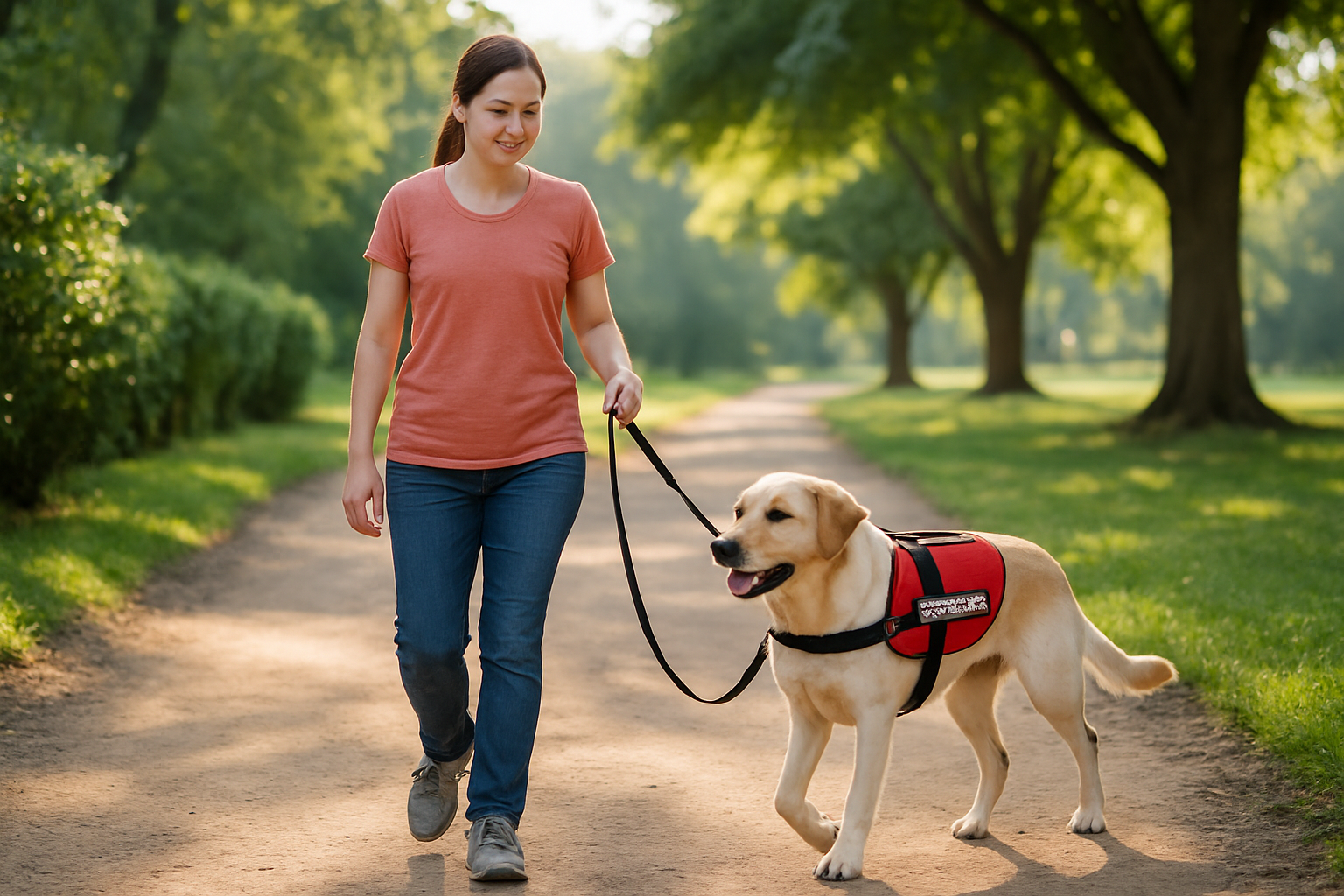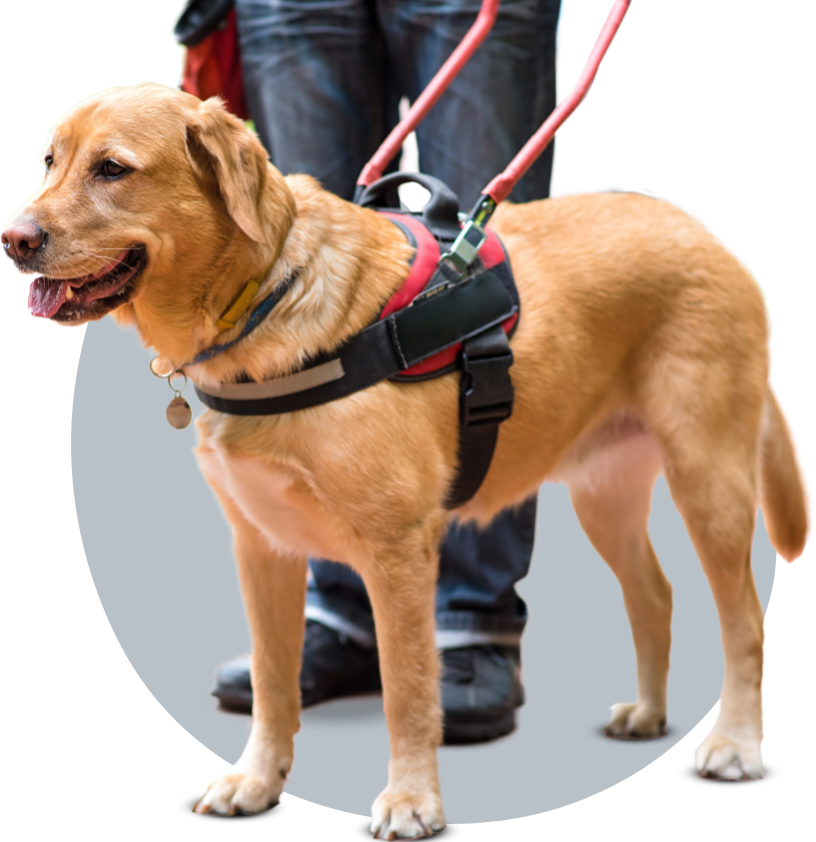Seizure Alert Service Dogs: A Comprehensive Guide

Seizure Alert Service Dogs play a vital role in the lives of individuals living with epilepsy or other seizure disorders. These remarkable animals are trained to detect the signs of an impending seizure and take necessary actions to ensure the safety and well-being of their handlers. In this guide, we’ll delve into the definition of seizure alert service dogs, explore ideal breeds for this important work, detail their training methodologies, and provide a step-by-step guide on tasks they are trained to perform. Additionally, we’ll discuss troubleshooting tips, socialization advice, and maintenance training to help individuals acquire or train a seizure alert service dog independently.
Defining Seizure Alert Service Dogs
Seizure Alert Service Dogs are specially trained to recognize the subtle behavioral and physiological changes that signal an impending seizure in their handler. These changes can vary widely from person to person but may include altered scent, body language, or even electrical changes in the brain. Once trained, these dogs can provide invaluable assistance and support during and after a seizure episode.
Ideal Breeds for Seizure Alert Service Work
When considering breeds for seizure alert service work, temperament and physical attributes are crucial factors. While any breed can potentially become a seizure alert service dog, certain breeds are often preferred due to their innate characteristics. Breeds known for their intelligence, trainability, and calm demeanor are typically chosen for this important role. Some commonly selected breeds include:
- Labrador Retrievers: Known for their gentle nature and high intelligence, Labs are often used as service dogs in various capacities, including seizure alert work.
- Golden Retrievers: Similarly to Labs, Golden Retrievers possess the ideal combination of intelligence, loyalty, and gentle disposition, making them excellent candidates for service work.
- Standard Poodles: Poodles are highly intelligent and trainable, with a hypoallergenic coat that may be beneficial for individuals with allergies.
- Border Collies: Renowned for their intelligence and work ethic, Border Collies excel in tasks that require precision and focus, such as alerting to seizures.
How to Obtain a Seizure Alert Service Dog: Three Methods
1. Trainer/Training Organization
Trainer or training organizations specialize in breeding, raising, and training service dogs for various purposes, including seizure alert assistance. These organizations employ professional trainers who utilize structured programs to train dogs to perform specific tasks tailored to individual needs. The process typically involves an application and assessment process to match handlers with suitable dogs. Once matched, the dog undergoes intensive training, often lasting several months, to ensure proficiency in seizure alert tasks. While this method may involve a waiting period and financial investment, it offers the assurance of working with experienced professionals who understand the intricacies of training service dogs.
Assistance Dog International (ADI) is a great resource to locate an ADI credentialed trainer in your area that may be able to assist you with having your dog trained to become a seizure alert service dog.
2. Non-profit Organizations
Non-profit organizations dedicated to providing assistance dogs often offer seizure alert service dogs as part of their programs. These organizations rely on donations and fundraising efforts to cover the costs associated with breeding, training, and placing service dogs. Individuals seeking a seizure alert service dog through non-profit organizations may be required to meet certain eligibility criteria and undergo an application and interview process. Once accepted into the program, the individual is matched with a suitable dog and provided with training and ongoing support. This method may offer financial assistance or reduced costs compared to private trainers or organizations, making it accessible to a broader range of individuals.
3. Self-training
Self-training involves individuals taking on the responsibility of training their own seizure alert service dog. While this method offers the flexibility of training the dog according to the handler’s specific needs and preferences, it requires a significant commitment of time, resources, and knowledge. Self-training typically involves researching training methodologies, attending obedience classes, and working closely with the dog to teach desired tasks. Positive reinforcement techniques, such as clicker training, are commonly utilized in self-training programs. While self-training can be a rewarding experience, it requires dedication and consistency to ensure the dog develops the necessary skills to assist with seizure alert tasks effectively.
Each method of obtaining a seizure alert service dog has its own advantages and considerations. Individuals should carefully evaluate their options based on factors such as cost, time, and level of support needed. Ultimately, the goal is to find a method that best suits the individual’s needs and circumstances, ensuring a successful partnership between handler and dog.
How to Train Your Own Seizure Alert Dog
Training a seizure alert service dog requires patience, consistency, and positive reinforcement techniques. Positive reinforcement involves rewarding desired behaviors with treats, praise, or toys, reinforcing the dog’s understanding of what is expected of them. Clicker training, a form of operant conditioning, is often used in conjunction with positive reinforcement to mark desired behaviors with a distinct sound, typically from a handheld clicker device.
Step-by-Step Guide for Training Tasks
- Recognizing Seizure Signs: Begin by teaching the dog to recognize the specific signs or cues associated with an impending seizure in their handler. This may include subtle changes in behavior, scent, or body language.
- Alerting: Once the dog has reliably identified the signs of an impending seizure, teach them to alert their handler by using a specific behavior, such as nudging or pawing.
- Finding Help: Train the dog to seek assistance from nearby individuals in the event of a seizure. This may involve leading someone back to the handler or retrieving a phone or medical alert device.
- Providing Comfort: Teach the dog to provide comfort and support to their handler during and after a seizure episode. This may include lying beside them, providing deep pressure therapy, or fetching medication or a blanket.

Troubleshooting and Socialization Tips
- Troubleshooting: If the dog struggles with any aspect of their training, break down the task into smaller steps and provide ample positive reinforcement for progress. Consistency and patience are key.
- Socialization: Expose the dog to a variety of environments, people, and other animals from a young age to ensure they are comfortable and confident in various situations. Gradually increase the level of difficulty as the dog progresses in their training.
Selecting the Right Dog
When selecting a dog for seizure alert service work, consider factors such as temperament, energy level, and health. Additionally, it’s important to assess the individual needs and lifestyle of the handler to ensure a suitable match.
Maintenance Training Tips
To maintain proficiency in their tasks, continue training and reinforcing desired behaviors throughout the dog’s life. Incorporate regular training sessions, practice scenarios, and occasional refresher courses to keep the dog sharp and responsive.
Registering Your Seizure Alert Service Dog with National Service Animal Registry
Registering your Seizure Alert service dog with National Service Animal Registry (NSAR) offers numerous benefits to both you and your canine partner. NSAR provides a simple and free registration process that helps establish your dog’s status as a service animal, which can facilitate smoother access to public places and accommodations. Here’s why registering with NSAR is advantageous:
- Legitimacy: Registration with NSAR adds legitimacy to your Seizure Alert service dog’s status. With a registered service dog, you can confidently assert your rights under the Americans with Disabilities Act (ADA) when accessing public spaces, transportation, housing, and other areas where service animals are allowed.
- Identification: NSAR provides identification tools such as vests, ID cards, and other merchandise that clearly indicate your dog’s role as a service animal. These visual cues not only help others recognize your dog’s purpose but also signal your commitment to responsible ownership.
- Ease of Access: Having your Seizure Alert service dog registered with NSAR can streamline interactions with businesses, landlords, and transportation providers. Showing your registration documentation and identification products can help mitigate misunderstandings and ensure smoother access to the accommodations and services you need.
- Peace of Mind: Registering with NSAR offers peace of mind, knowing that you have official documentation and support to navigate situations where your service dog’s presence may be questioned. It provides a sense of security and empowerment as you go about your daily activities with your trusted companion by your side.
NSAR offers a range of registration options, including free basic registration and premium packages with additional benefits. Take advantage of NSAR’s services to register your Seizure Alert service dog today and enjoy the confidence and convenience that come with official recognition and identification.
Conclusion
Seizure alert service dogs are invaluable companions for individuals living with seizure disorders, providing both practical assistance and emotional support. By understanding the definition of these remarkable animals, identifying ideal breeds, implementing effective training methodologies, and addressing common challenges, individuals can acquire or train a seizure alert service dog with confidence. With dedication and commitment, these extraordinary dogs can make a profound difference in the lives of their handlers, enhancing independence and improving overall quality of life.
Brought to you by National Service Animal Registry. Learn more about us and how to qualify your pet as a service dog, emotional support animal (ESA), or therapy animal, TODAY!
















































































